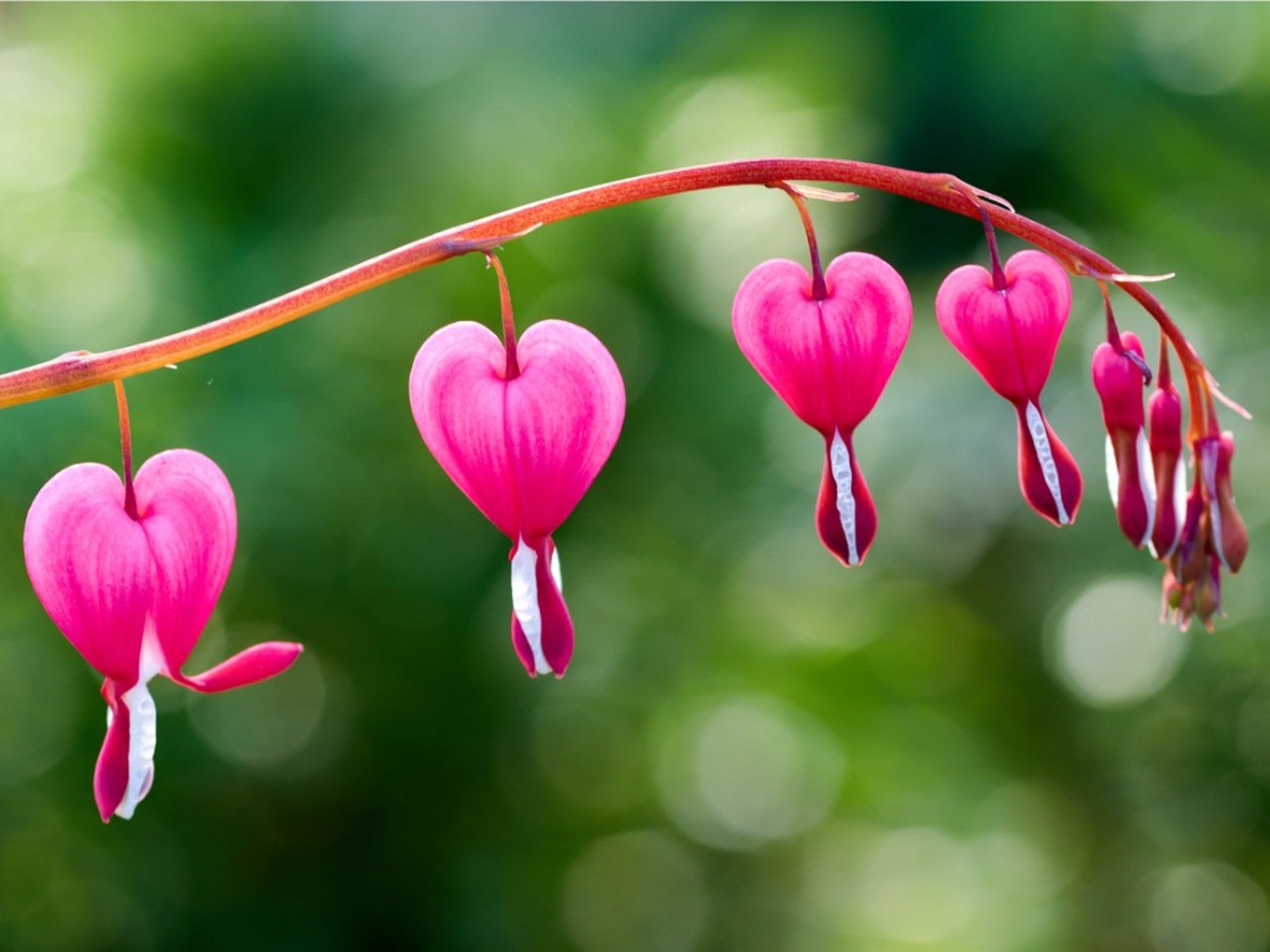Bleeding Heart Flower Care - How To Grow Bleeding Hearts

Tonya Barnett

The bleeding heart plant (Lamprocapnos spectabilis) is one of the first in spring to burst into life, serving as a much-needed sign that warmer weather will soon arrive. Attractive bluish-green foliage emerges first as the plant wakes from dormancy. Soon after it adorns the garden with attention-getting, heart-shaped flowers borne on arching stems. The flowers of the bleeding heart may be pink and white or solid white, as with the bleeding heart cultivar "Alba."
Learning more about bleeding heart care will help you to promote healthy growth and dependable bloom season after season.
Quick Facts about Bleeding Heart Plants
- Botanical name - Lamprocapnos spectabilis (formerly Dicentra spectabilis, Fumaria spectabilis)
- Height - 24-36 inches (61-91 cm)
- Spread - 12-24 inches (30-61 cm)
- Sun exposure - Part to Full Shade
- Soil requirements - Slight Acidic to Neutral
- Hardiness zones - USDA Zones 3-9
- When to plant - Fall, Early Spring
Where and When to Plant Bleeding Hearts
Within their native range, bleeding heart flowers are most commonly found throughout woodlands, forests, and other shaded areas. In the home garden, plants will thrive in growing beds that receive partial shade or dappled light throughout the majority of the day.
As a cool-season flower, bleeding hearts are best planted when temperatures are mild. Planting in the fall is often the most popular choice, as this allows for a prolonged period of establishment before the arrival of colder winter weather. Bleeding hearts may also be planted in the spring, as soon as the soil can be worked. Regardless of when you plant, work compost or other organic matter into the area first.
How to Grow Bleeding Hearts
Many are surprised that growing bleeding hearts is so simple. Once you are aware of how to grow bleeding hearts, you may want to use them to brighten dark and shady areas.
Soil
Bleeding hearts will perform best in well-draining, rich soil. Though these plants are able to adapt to a range of soil conditions, experienced growers suggest those which are neutral or only slightly acidic.
Fertilizer
Best care of bleeding heart plants will include annual feeding. When foliage emerges in spring, time-release plant food may be worked into the soil around the plant, as may additional compost. Early feeding will help in the production of flowers, as well as the continued development of a healthy root system.
Sign up for the Gardening Know How newsletter today and receive a free copy of our e-book "How to Grow Delicious Tomatoes".
Light and Water Requirements
Bleeding hearts need a cool, shady area for optimum bloom in warmer southern zones, but farther north this specimen may bloom in a full sun location. Apply a hefty amount of organic mulch to keep the plants cool throughout the growing season. Consistent moisture will also help to maintain the appearance of the plant’s flowers and foliage. This is especially true throughout the warmest months of summer.
Though supplemental irrigation will likely be necessary in order to keep the plants looking their best, you should still make sure to avoid overwatering or planting in beds with poor drainage. Excessively wet or waterlogged soils can be quite problematic, and may even lead to the loss of plants.
Pruning
Pruning to maintain the size and structure of bleeding heart plants is seldom required. However, many growers do choose to remove foliage after it has started to yellow and die back in late spring or early summer. At this time, the plant will have completed its cycle of growth for the season. Yellow or wilted stems can be trimmed back to the ground with the use of pruners or garden secateurs.
Do not remove the foliage before it turns yellow or brown -- even though the flowers are gone, your bleeding heart plant's leaves are storing food for next year's growth. To better prevent the spread of disease among plants, all garden debris should be promptly removed from the growing space.
Propagation
Self-sown seeds of the bleeding heart may add more plants to the garden, but the surest method of propagation is to divide clumps every few years. Carefully dig up the roots of the bleeding heart, remove roots that are dried up, and divide the rest. Plant these into other areas of the garden for an early spring show.
Problems, Pests, & Diseases
Issues related to soil moisture are among the most common problems with bleeding hearts. Excess moisture, specifically in winter, will often cause the plants to rot. During periods of active growth, drought-like or dry conditions may also lead to the loss of plants. As all parts of the plant are toxic, bleeding hearts are seldom bothered by browsing animals like rabbits or deer. Gardeners often find that other types of pests, such as aphids or slugs, may still frequent their growing beds.
Bleeding Heart Care
Once established, bleeding heart plants are relatively carefree. Though this perennial is known for its perseverance, it may die back to the ground in regions which experience especially hot summer temperatures. This process is natural, and should not cause alarm for growers.
Gardeners can expect the plants to remain dormant until the following spring, when growth will resume. It is for this reason that bleeding hearts are often considered to be a good choice for established shade gardens, rather than mass or focal plantings.

Becca Badgett was a regular contributor to Gardening Know How for ten years. Co-author of the book How to Grow an EMERGENCY Garden, Becca specializes in succulent and cactus gardening.
- Tonya BarnettWriter